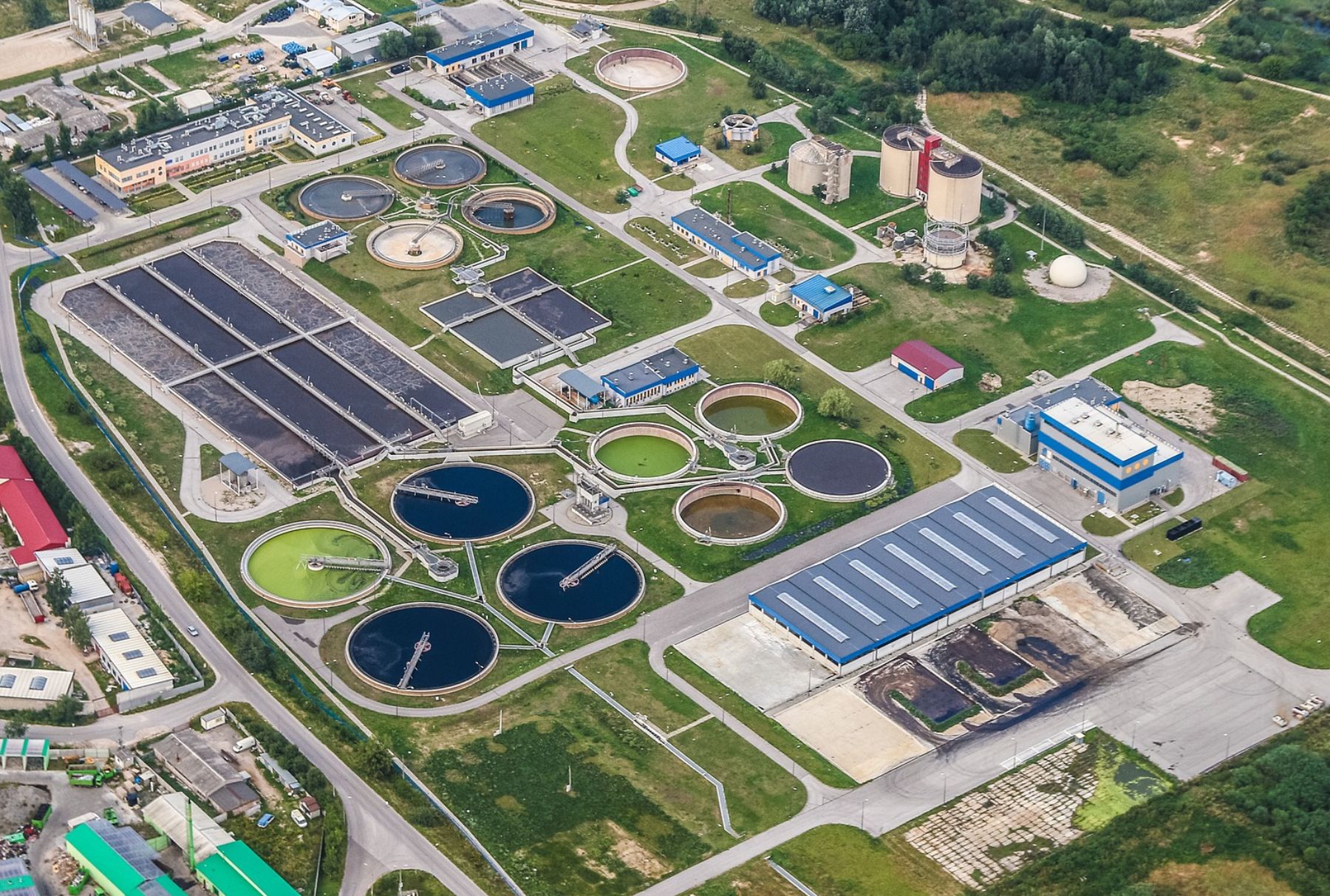Research Theme: Engineered Biological Systems
Engineered biological treatments such as wastewater treatment plants are amazing.
Successful biological treatment remains one of the most cost-effective methods of pollutant removal.
Engineered biological treatments such as wastewater treatment plants are amazing. Thousands of different micro-organisms come together in an engineered space to remove pollutants.
All biological treatment plants operate to the same rules. Understanding the rules that govern microbial communities is essential. They underpin the successful design and operation of such treatment plants.
Microbial ecology provides a new scientific basis for engineering better systems. In environmental engineering, we are applying a synthesis of ecological theories and DNA-based molecular measurement tools. This helps us to predict how microbial communities assemble and change over time. We are developing our understanding of how they respond to nutrients and other resources.
Our environmental engineering research also focuses on integrating quantitative microbial data into simple process models. We model the actions of microorganisms involved in specific process functions or problems.

BEWISe Biological Engineering: Wastewater Innovation at Scale
BEWISe is our experimental wastewater treatment facility. It consists of large pilot-scale replicated biological treatment processes. Both academic and industrial researchers use BEWISe. A Northumbrian Water Ltd site near to Newcastle upon Tyne hosts the facility. It is one of, if not the largest in Europe.
BEWISe will develop innovations for sustainable wastewater treatment. It will speed up the transition from these processes to low-carbon alternatives with lower running costs. BEWISe will be an international centre of academic and industrial research excellence. It will provide for experimentation and demonstration of wastewater management technology in environmental engineering.
The facility enables experiments which use 10,000 times more microbes than we can use in the laboratory. It allows large scale experimental investigations that are scientifically rigorous and industrially credible.
BEWISe received a £1.2 million grant from EPSRC. Newcastle University and Northumbrian Water Ltd (NWL) also provide funding. It is one of the most visible manifestations of our strategic partnership with NWL.
The main pilot plant hall contains duplicate automated 3m3 activated sludge and trickling filter pilot plants. Real wastewater from a local town feeds the plant. The town has a population of around 40,000.
- BEWISe Biological Engineering: Wastewater Innovation at Scale
- Davenport Research Group
- Academic staff
- Dr Russell Davenport
- Dr Adam Jarvis
- Prof Tom Curtis
- Researchers
- Mr Dave Curtis
- Dr Mathew Brown
- Sponsors
- EPSRC
- Northumbrian Water Ltd
- Newcastle University
- Partner
- Northumbrian Water Ltd
- Dates
- 2016-2020
Bioelectrochemical systems: harnessing heat energy from the environment
Bioelectrochemical systems include technologies such as microbial fuel and electrolysis cells. They hold promise as energy-efficient waste treatment systems, but the energy efficiency of the current generation is low. The aim of our research is to change this.
We have identified that the anode of these systems takes up heat from the environment.
We are now quantifying this somewhat unexpected heat flow with the idea of using the energy to improve the energy efficiency of the system.
Academic staff
- Dr Jan Dolfing
- Researcher
- Dr Carl Samuel
- Sponsor
- EPSRC (Bright Ideas programme)
- Dates
- 2018-2020
BIOHEAT: Husbanding biological heat to transform wastewater treatment
Bioelectrochemical systems (BES) are developing technology. Specialised bacteria grow on an electrode and produce currents as they digest the wastes. BIOHEAT is investigating heat transfers in microbial systems. This understanding will allow us to engineer and husband them.
BES technologies work with dilute wastewaters and at low temperatures. But they are not energetically efficient. Up to 90% of the total input energy goes missing, and some of this goes to heat.
Balancing the energy inputs and outputs is important for the industrial credibility of BES technology. Different microbial metabolisms, such as electrogenesis and hydrolysis, may have different temperature signals. If we can link a temperature signal to different metabolisms, taking the temperature of a biofilm may be useful as a diagnostic tool.
Linking heat energy to growth will give us a deeper understanding of the biology of anaerobic systems. We need to understand the link between a heat signal to metabolism, substrate uptake, and growth in mixed microbial systems. This will provide a platform for future research into how energy relates to bacterial stability and diversity. It will provide us with information about how we can engineer these.
- BIOHEAT: husbanding biological heat to transform wastewater treatment
- Principal investigator
- Partners
- CentraleSupelec
- Helmholtz Association
- Northumbrian Water Group plc
- Sponsors
- EPSRC: Engineering and Physical Sciences Research Council
- Dates
- 2019–2021
EBNet: BBSRC Environmental Biotechnology Network
EBNet is free to join. We explore environmental engineering microbial systems for environmental protection, bioremediation, and resource recovery. We investigate the use of microbes in anaerobic digestion and wastewater treatment. We also study microbes able to bio-degrade plastics, oil, or other emerging pollutants.
Environmental Biotechnology has an important role to play in the service of the environment. It is also a major part of the burgeoning bioeconomy.
We are promoting the use of Environmental Biotechnology. We are working in collaboration with partners in Southampton (Sonia Heaven), Cranfield, and Herriot Watt. The network organises events, promotes business interactions, and funds proof-of-concept studies. We are particularly keen to support Early Career Researchers and hold events and award prizes targeted at this group.
- EBNet: BBSRC Environmental Biotechnology Network
- Academic staff
- Sponsors
- BBSRC (Biotechnology and Biosciences Research Council)
- Partners
- Southampton, Heriot-Watt and Cranfield Universities
- Dates
- 2019-2022
Engineering microbial-induced carbonate precipitation via meso-scale simulations
Ageing infrastructure is an increasing economic and environmental problem. Concrete is costly to produce and to repair and maintain. But it can be self-healing, as a result of bacterial metabolic activity. We are investigating ways of predicting the most promising combinations of bacteria and concrete.
The cost of producing one cubic metre of concrete varies between £45 and £55. The cost of repair and maintenance of one cubic metre is around £100. Production of cement generates 5 to 8% of the world's carbon dioxide emissions.
Counteracting the degradation of concrete would lower the need for new materials. This would reduce consumption of resources and greenhouse gas emission.
Engineers working in environmental engineering research have proposed a revolutionary solution inspired by nature. Self-healing materials can self-repair as a result of the metabolic activity of bacteria. The main mechanism of concrete healing is microbial-induced precipitation of calcium carbonate. Currently, we identify a few species of bacteria that work for limited sets of concretes and environments. We then optimise their MICP performance incrementally by experiments. But the solutions don’t transfer with ease to new applications. We have to carry out new experiments which are costly.
In this research, we will provide a new theoretical basis to predict the most promising combinations of bacteria and concrete. We will base these predictions on the application-specific chemical compositions of the concrete. This will establish a new paradigm for the digital design of concrete-bacteria systems. It will enable technology transfer across the constructions sector.
- Engineering microbial-induced carbonate precipitation via meso-scale simulations
- Academic staff
- Dr Dana Ofiteru
- Dr Enrico Masoero
- Researchers
- Sponsors
- EPSRC
- Partners
- University of Bath, Cardiff University, Northumbrian Water Ltd
- Dates
- 2019-2022
MGnify: EBI metagenomics portal
The EBI Metagenomics portal is a free service. It provides access to MGnify, an automated pipeline for analysing and archiving microbiome data. MGNnify determines the taxonomic diversity and functional and metabolic potential of environmental samples. Submit your own data for analysis or browse the analysed public datasets.
This important project will democratise and enhance the emerging field of metagenomics. We will do this with the provision and enhancement of the EBI metagenomics portal.
This is a collaborative project led by Robb Finn of the European Bioinformatics Institute at the Sanger Institute. At Newcastle, we are building on earlier work to create effective statistical tools. These will provide analysis of metagenomic data incorporated in the EBI Metagenomics Portal.
MGnify brings the power of metagenomics to engineers and other practitioners.
- Academic staff
- School of Engineering: Prof Tom Curtis
- School of Mathematics, Statistics and Physics: Prof Darren Wilkinson
- Researchers
- Sponsors
- BBSRC (Biotechnology and Biological Sciences Research Council)
- Partners
- European Bioinformatics Project
- Dates
- 2019-2022
Nitrification in tropical wastewaters
Nitrification is the conversion of ammonia to nitrate. It is important in wastewater treatment, as ammonia is very toxic to fish. But most research in this area of environmental engineering has so far been undertaken in temperate areas. We are investigating nitrification in warm climates.
We have learnt much of what we know about nitrification by studying wastewater treatment plants in the temperate regions. But many tropical and middle eastern countries now need to nitrify wastewaters in a reliable and economic manner. Thus, we are carrying out studies in Malaysia and Bahrain. We are investigating the underlying microbial ecology of nitrification in warm climates.
We are working with partners in the University of Malaya (Adeline Chua Seak May) in a project supported by the Newton Fund. Peter Naylor at the Muharraq Treatment Plant in Bahrain has recently joined us.
- Academic staff
- Researchers
- Vincent How (University of Malaya), Peter Naylor (Bahrain)
- Sponsors
- Royal Society Newton Fund; self-funded
- Partners
- University of Malaya, Peter Naylor
- Dates
- 2016-2022
Upscaling bioelectrochemical systems (BES)
Bioelectrochemical systems can provide a new generation of wastewater treatment systems in environmental engineering. We can retrofit them. They could also provide wastewater treatment and limited energy in rural or poor areas. Scaling up bioelectrochemical systems is one of the greatest research challenges in this area.
Bioelectrochemical systems (BES) are battery-like cells. They use biofilms of naturally occurring bacteria to digest waste organics. From this, they then donate electrons to a circuit, generating current.
BES could be a critical innovation to enable the circular economy vision of unlocking the energy in wastewater.
Laboratory scale experiments produce different and non-representative results. Testing at pilot scale is critical. But these systems have high inherent variability. Thus, gaining accurate reproducible experimental data is difficult.
We have designed, built, and tested a series of pilot scale reactors at Northumbrian Water sites. We have commissioned three replica 1m3 reactors at BEWISe. The BEWISe facility is available to academia and industry. It enables users to make innovations in wastewater treatment a reality for the water sector.
